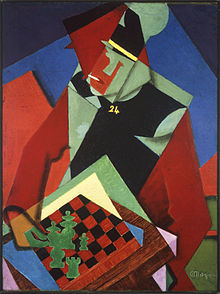
The Legion of Honor, formally known as the California Palace of the Legion of Honor, is an art museum in San Francisco, California. Located in Lincoln Park, the Legion of Honor is a component of the Fine Arts Museums of San Francisco (FAMSF), which also administers the de Young Museum. In 2024, the two combined museums were ranked 15th in the Washington Post's list of the best art museums in the U.S.

The Walker Art Center is a multidisciplinary contemporary art center in the Lowry Hill neighborhood of Minneapolis, Minnesota, United States. The Walker is one of the most-visited modern and contemporary art museums in the U.S.: together with the adjacent Minneapolis Sculpture Garden and Cowles Conservatory, it has an annual attendance of around 700,000 visitors. The museum's permanent collection includes over 13,000 modern and contemporary art pieces, including books, costumes, drawings, media works, paintings, photography, prints, and sculpture.
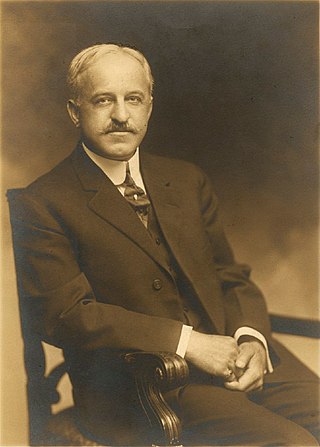
Samuel Henry Kress was a businessman, philanthropist, and founder of the S. H. Kress & Co. five and ten cent store chain. With his fortune, Kress amassed one of the most significant collections of Italian Renaissance and European artwork assembled in the 20th century. In the 1950s and 1960s, a foundation established by Kress would donate 776 works of art from the Kress collection to 18 regional art museums in the United States.

Carnegie Museums of Pittsburgh is a nonprofit organization that operates four museums in Pittsburgh, Pennsylvania, United States. The organization is headquartered in the Carnegie Institute and Library complex in the Oakland neighborhood of Pittsburgh. The Carnegie Institute complex, which includes the original museum, recital hall, and library, was added to the National Register of Historic Places on March 30, 1979.
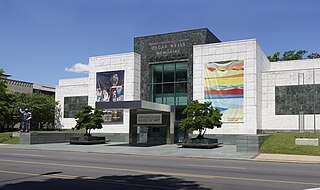
The Birmingham Museum of Art is a museum in Birmingham, Alabama. Its collection includes more than 24,000 paintings, sculptures, prints, drawings, and decorative arts representing various cultures, including Asian, European, American, African, Pre-Columbian, and Native American. The museum is also home to some Renaissance and Baroque paintings, sculptures,and decorative arts from the late 13th century to c. 1750.
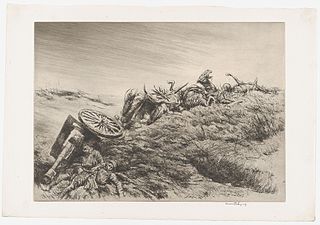
Kerr Eby was a Canadian illustrator best known for his renderings of soldiers in combat in the First and Second World Wars. He is held in a similar regard to Harvey Dunn and the other famous illustrators dispatched by the government to cover the First World War.

The Berkeley Art Museum and Pacific Film Archive are a combined art museum, repertory movie theater, and archive associated with the University of California, Berkeley. Lawrence Rinder was Director from 2008, succeeded by Julie Rodrigues Widholm in August, 2020. The museum is a member of the North American Reciprocal Museums program.

The Art Institute of Chicago, founded in 1879, is one of the oldest and largest art museums in the United States. The museum is based in the Art Institute of Chicago Building in Chicago's Grant Park. Its collection, stewarded by 11 curatorial departments, includes works such as Georges Seurat's A Sunday on La Grande Jatte, Pablo Picasso's The Old Guitarist, Edward Hopper's Nighthawks, and Grant Wood's American Gothic. Its permanent collection of nearly 300,000 works of art is augmented by more than 30 special exhibitions mounted yearly that illuminate aspects of the collection and present curatorial and scientific research.

Edward Larrabee Barnes was an American architect. His work was characterized by the "fusing [of] Modernism with vernacular architecture and understated design." Barnes was best known for his adherence to strict geometry, simple monolithic shapes and attention to material detail. Among his best-known projects are the Haystack School, Christian Theological Seminary, Dallas Museum of Art, the Walker Art Center, 599 Lexington Avenue, the Thurgood Marshall Federal Judiciary Building, and the IBM Building at 590 Madison Avenue.
The Chicago Imagists are a group of representational artists associated with the School of the Art Institute of Chicago who exhibited at the Hyde Park Art Center in the late 1960s.
Barbara Rossi was an American artist, one of the original Chicago Imagists, a group that in the 1960s and 1970s turned to representational art. She first exhibited with them at the Hyde Park Art Center in 1969. She is known for meticulously rendered drawings and cartoonish paintings, as well as a personal vernacular. She worked primarily by making reverse paintings on plexiglass that reference lowbrow and outsider art.

Horace Clifford Westermann was an American sculptor and printmaker. His sculptures frequently incorporate traditional carpentry, marquetry techniques, mixed media, and a range of personal, literary, artistic, and pop-cultural references.

Stephen Arnold Douglas Volk was an American portrait and figure painter, muralist, and educator. He taught at the Cooper Union, the Art Students League of New York, and was one of the founders of the Minneapolis School of Fine Arts. He and his wife Marion established a summer artist colony in western Maine.
The Nora Eccles Harrison Museum of Art (NEHMA) is an accredited academic art museum focused on modern and contemporary art at Utah State University in Logan, Utah. NEHMA was founded in 1982 with the ceramic collection of philanthropist and namesake Nora Eccles Harrison. The museum has since expanded to include over 5,500 objects focused on modernist and contemporary works created in the western region of the United States. The core of the collection explores certain key art historical movements including Beat, Los Angeles Post-Surrealism, Santa Fe Transcendentalism, and Bay Area Abstract Expressionism. The museum also collects and exhibits contemporary works that function as glimpses of the thriving art scenes found in many cities in the Western United States. Additionally, the museum serves as the recipient of the Vogel Collection for the state of Utah.

The University of Arizona Museum of Art (UAMA) is an art museum in Tucson, Arizona, operated by the University of Arizona. The museum's permanent collection includes more than 6,000 works of art, including paintings, sculptures, prints and drawings with an emphasis on European and American fine art from the Renaissance to the present.
Culture Coast Chicago is a collection of artistically vibrant neighborhoods on the South Side of Chicago, Illinois, United States. Known for its high concentration of museums, music and theater ensembles, performance venues, cultural nonprofits, and arts education opportunities, the region spans from just south of McCormick Place to the South Shore Cultural Center and is bordered by Lake Michigan to the east and the Dan Ryan Expressway to the west.
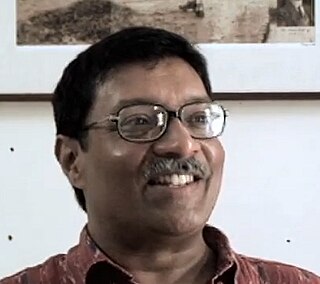
Ram Rahman is a noted contemporary Indian photographer and curator. based in Delhi. He is one of the founding members of the Safdar Hashmi Memorial Trust (SAHMAT) in New Delhi, a leader in the resistance to communal and sectarian forces in India through its public cultural action.
Mu Xin is the pen name of Sun Pu, courtesy name Yangzhong, a Chinese painter, poet and writer. His works draw on both Chinese and Western traditions. The pen name Mu Xin is derived from Hang Dynasty Poetry 《木鐸含心》"the bronze bell has ringing heart of wood".
Alison "Ali" Gass is an American curator and museum director. She is the founding director of the Institute of Contemporary Art San Francisco. She has served as the director of the Institute of Contemporary Art San José, Smart Museum of Art, and chief curator of the Cantor Arts Center at Stanford University.
Wu Hung is an art historian and Harrie A. Vanderstappen Distinguished Service Professor of Art History and the College at the University of Chicago. He has also taught at Harvard University and worked as an adjunct faculty curator at the Smart Museum of Art. He currently serves as the director of the Center for the Art of East Asia at the University of Chicago.


